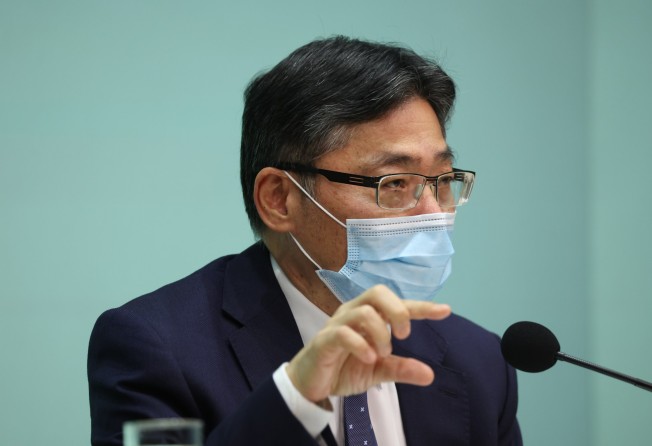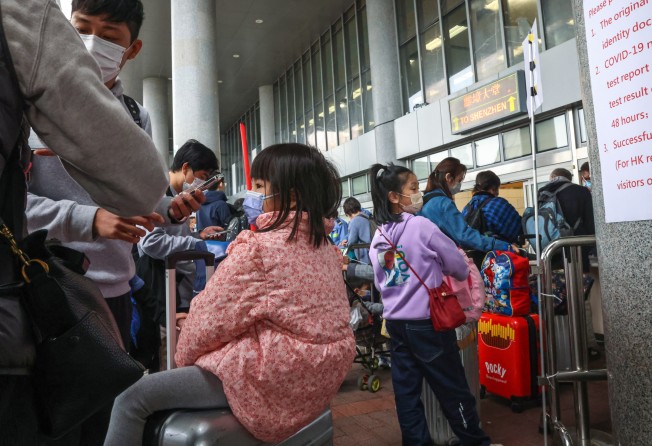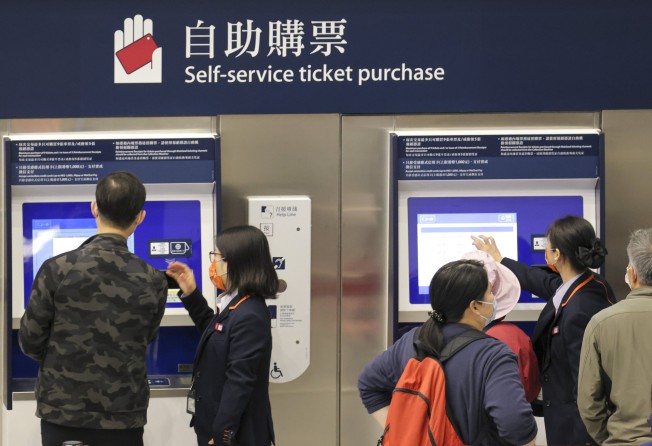
Hong Kong, mainland China increase daily quota of cross-border travellers by 15,000 each way to 65,000 for 4-day lead-up to Lunar New Year
- Quota for those in private cars and cross-boundary hire-car services passing through Hong Kong-Zhuhai-Macau Bridge also doubled between January 18 and 21
- City’s transport chief meanwhile pledges operational improvements a day before high-speed rail launch

Hong Kong and mainland China have agreed to increase the daily quota of cross-border travellers at land checkpoints by 15,000 to 65,000 each way for the four days before the Lunar New Year break to cope with surging demand.
The quotas for travellers in private cars and cross-boundary hire-car services passing through the Hong Kong-Zhuhai-Macau Bridge would also be doubled to 2,000 daily from January 18 to 21 each way, authorities announced on Saturday.
The adjustments were made a day ahead of the resumption of the high-speed rail link connecting Hong Kong and the mainland, with most tickets for trips in the coming two weeks still up for grabs.
Hong Kong on January 8 introduced a 50,000 daily quota for people headed to the mainland through land checkpoints, among which 35,000 has been set aside for the crossing at Lok Ma Chau, 10,000 for Shenzhen Bay Port and 5,000 for Man Kam To.
Under the latest announcement, the 10,000 quota for Shenzhen Bay will be increased to 15,000 during the four days indicated, while the 35,000 figure for Lok Ma Chau Spur Line will rise to 45,000. The 5,000 quota for Man Kam To will remain unchanged.
“As Lunar New Year is approaching, we understand that people on both sides want to reunite with relatives and friends, and the demand for coming to Hong Kong or the mainland in the lead-up to the festival is relatively strong,” Chief Secretary Eric Chan Kwok-ki wrote on his Facebook page.
He added that time slots from January 18 to 21 had been nearly or fully booked, thus after communicating with the Guangdong and Shenzhen governments, it was agreed that “there is room for a moderate increase in the daily number of people crossing the border through these checkpoints” for the four days before the break.
A Hong Kong government spokesman said there were sufficient time slots on other days in the current first phase of service resumption – which will stretch into March – to cater to travellers’ needs.
With the new adjustments taking effect at 3pm on Saturday, a Post check as of 9pm found the website listing “sufficient” time slots for all checkpoints at the Lok Ma Chau station, Shenzhen Bay Port, Man Kam To, and the Hong Kong-Zhuhai-Macau Bridge from January 18 to 21.

Secretary for Transport and Logistics Lam Sai-hung separately told a radio programme on Saturday that Hong Kong’s rail operator, the MTR Corporation, would deploy enough staff on the ground to help travellers fill out necessary entry documents while ensuring the latest ticketing situation would be shown to online users on Sunday when services for the high-speed rail link resumed.
“The flow of information and its transparency is the most important factor.”
On Thursday, MTR operations at the West Kowloon terminus of the high-speed rail link to Guangzhou encountered hiccups as passengers formed long queues outside the station in hopes of securing tickets on the first day of bookings.
Lam on Saturday attributed the scene to the suspension of the train service for nearly three years, pointing out preparatory work was needed to get the system up to speed.
He also conceded that the change in the booking website also had an impact, with the previous Hong Kong system completely replaced by a mainland platform, known as 12306.

According to a Post check, as of 9pm on Saturday, tickets for trains to four mainland stations available in the first phase – Futian, Shenzhen North, Guangzhou South and East – are still largely available at station counters until January 27, except the service to Guangzhou South on Sunday and between January 19 and 21, days before the Lunar New Year break begins on January 22.
As many as 363 tickets for Futian station are still on sale for Sunday, while the more popular option of Guangzhou South can still accommodate another 31 passengers.
Rail tickets for the next 15 days, however, are mostly sold out on the 12306 platform. The MTR Corp said it would coordinate ticket allocation across different booking platforms, but that its website only reflected the ticketing situation at the terminus.
Lam maintained that the ticketing bottleneck had improved by Friday, with the MTR Corp publishing more user-friendly instructions online.
As for the East Rail line that connects the mainland with Lok Ma Chau station, another cross-border checkpoint, Lam said there was still room to step up MTR services for trains during particular hours.
Lam said ticket sales for ferry and bus services linking both sides would also be monitored to guard against scalpers.
He added that flights in and out of Hong Kong were still at 35 per cent of pre-pandemic levels, but the figure was expected to rise to 80 per cent by the end of the year.
While experts have predicted full-service resumption would not occur until 2024 or 2025, Lam struck a more optimistic note. “I hope we can achieve it sooner than that estimate.”